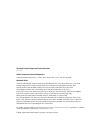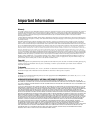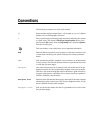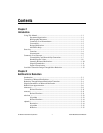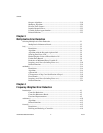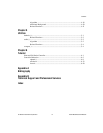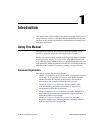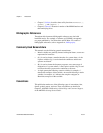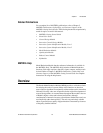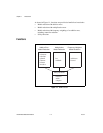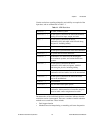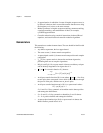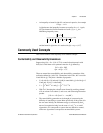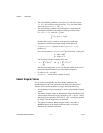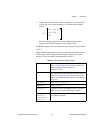Chapter 1 Introduction
Xmath Model Reduction Module 1-2 ni.com
• Chapter 5, Utilities, describes three utility functions: hankelsv( ),
stable( ), and compare( ).
• Chapter 6, Tutorial, illustrates a number of the MRM functions and
their underlying ideas.
Bibliographic References
Throughout this document, bibliographic references are cited with
bracketed entries. For example, a reference to [VODM1] corresponds
to a paper published by Van Overschee and De Moor. For a table of
bibliographic references, refer to Appendix A, Bibliography.
Commonly Used Nomenclature
This manual uses the following general nomenclature:
• Matrix variables are generally denoted with capital letters; vectors are
represented in lowercase.
• G(s) is used to denote a transfer function of a system where s is the
Laplace variable. G(q) is used when both continuous and discrete
systems are allowed.
• H(s) is used to denote the frequency response, over some range of
frequencies of a system where s is the Laplace variable. H(q) is used
to indicate that the system can be continuous or discrete.
• A single apostrophe following a matrix variable, for example, x’,
denotes the transpose of that variable. An asterisk following a matrix
variable, for example, A*, indicates the complex conjugate, or
Hermitian, transpose of that variable.
Conventions
This publication makes use of the following types of conventions: font,
format, symbol, mouse, and note. These conventions are detailed in
Chapter 2, MATRIXx Publications, Online Help, and Customer Support,
of the MATRIXx Getting Started Guide.




